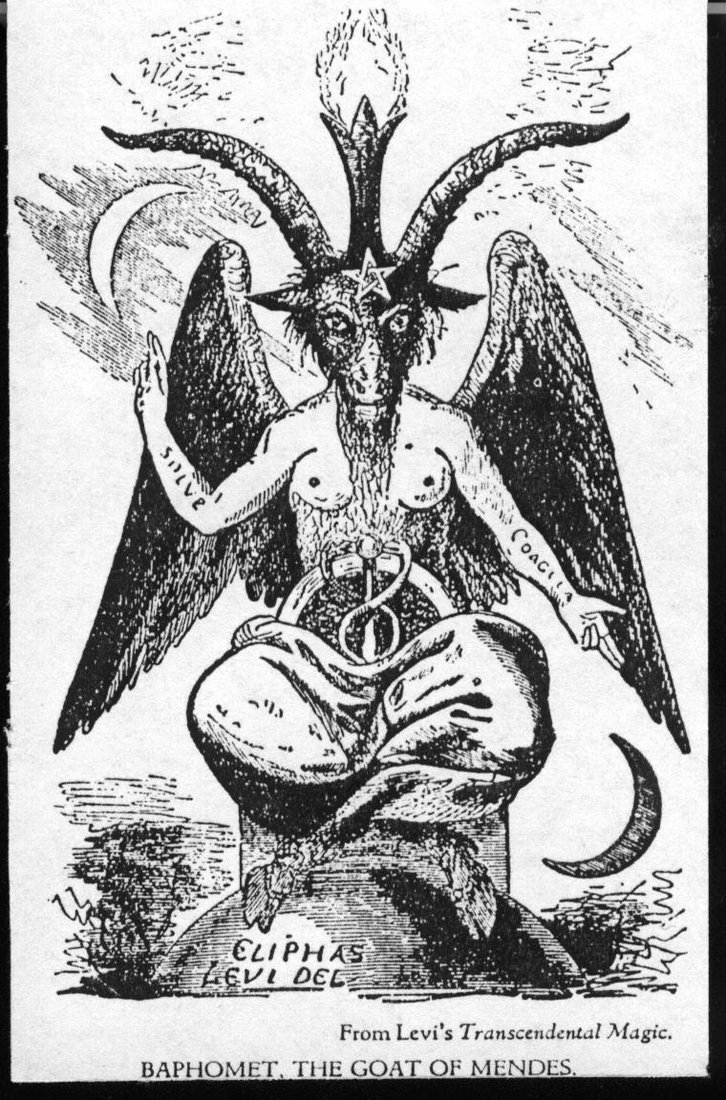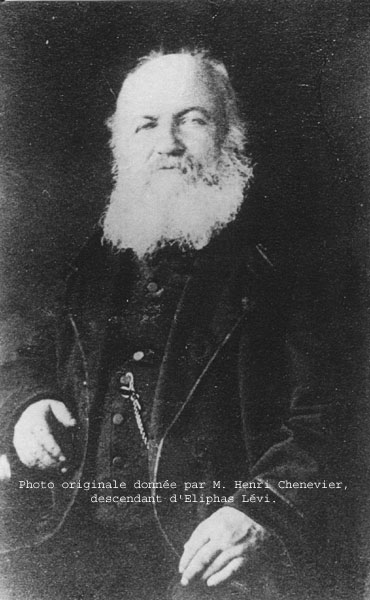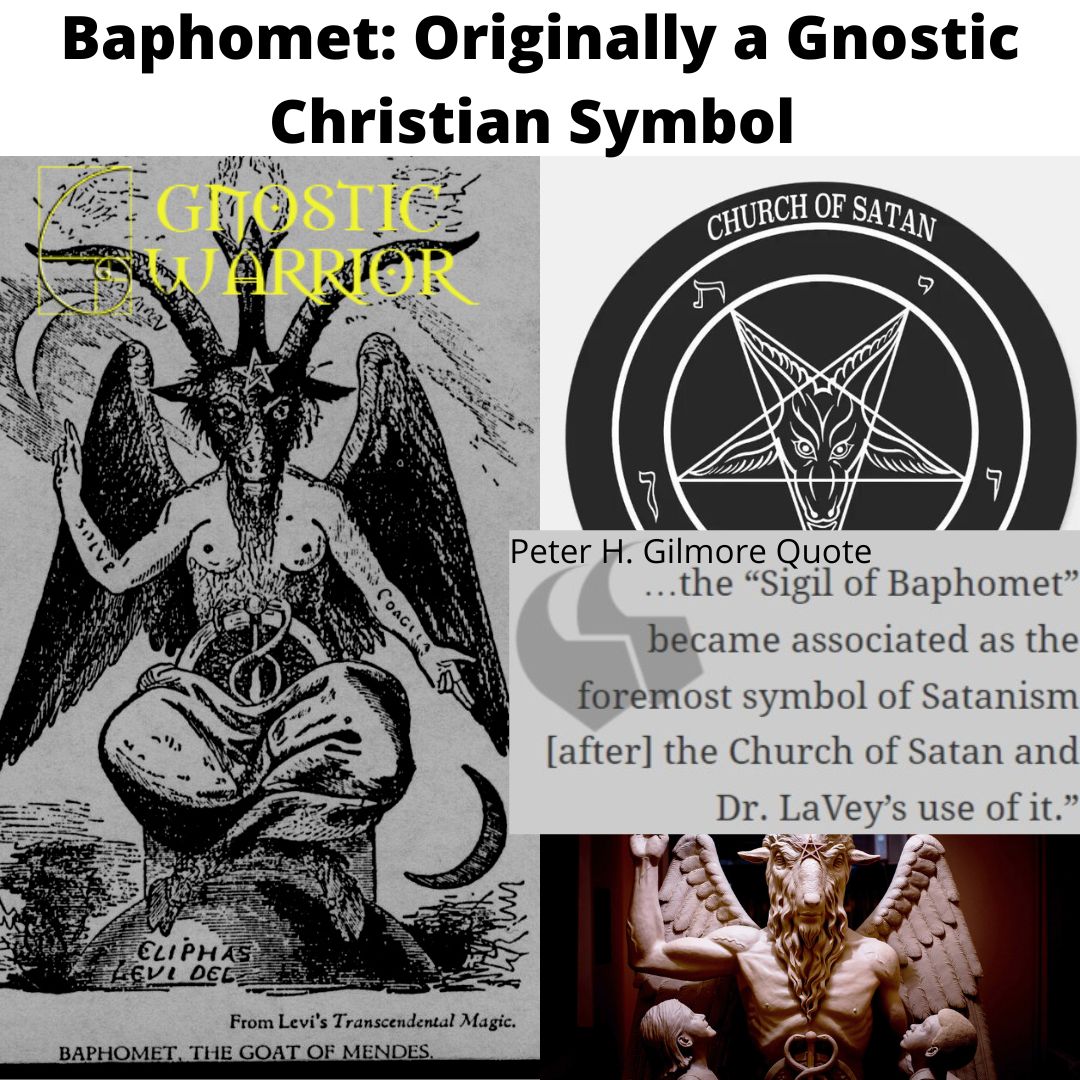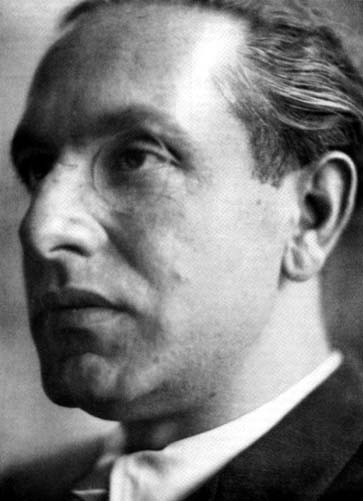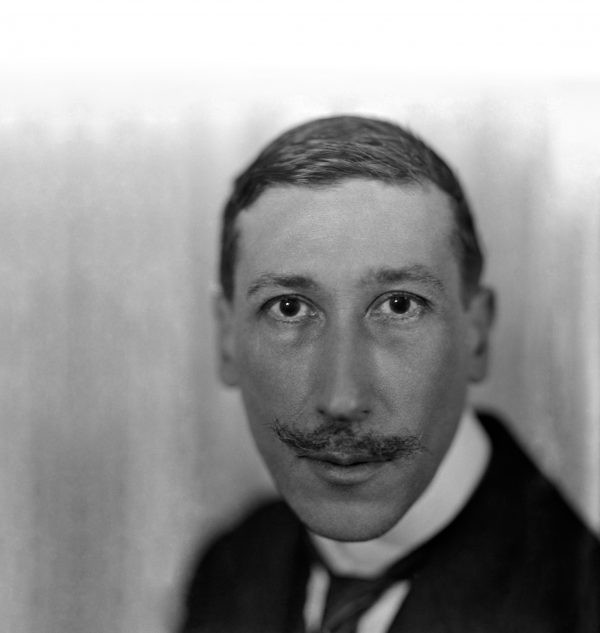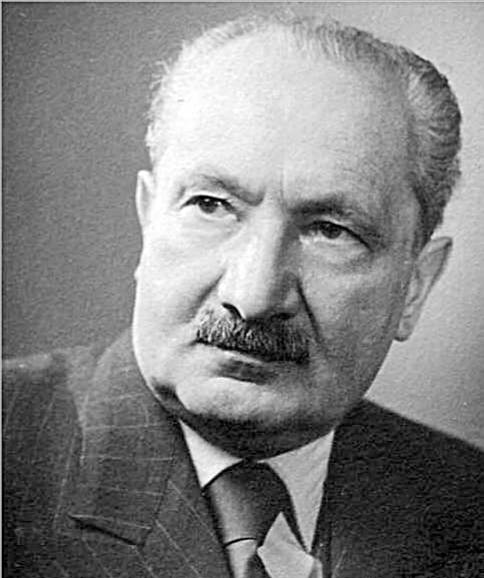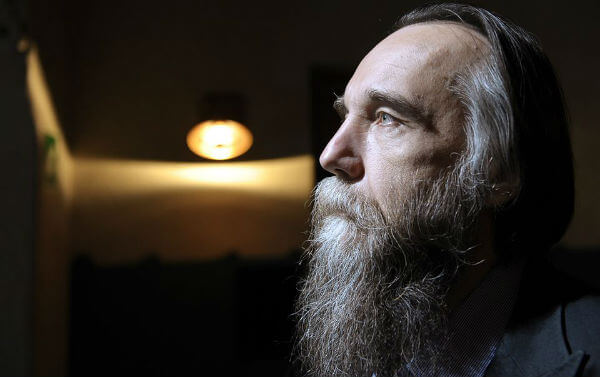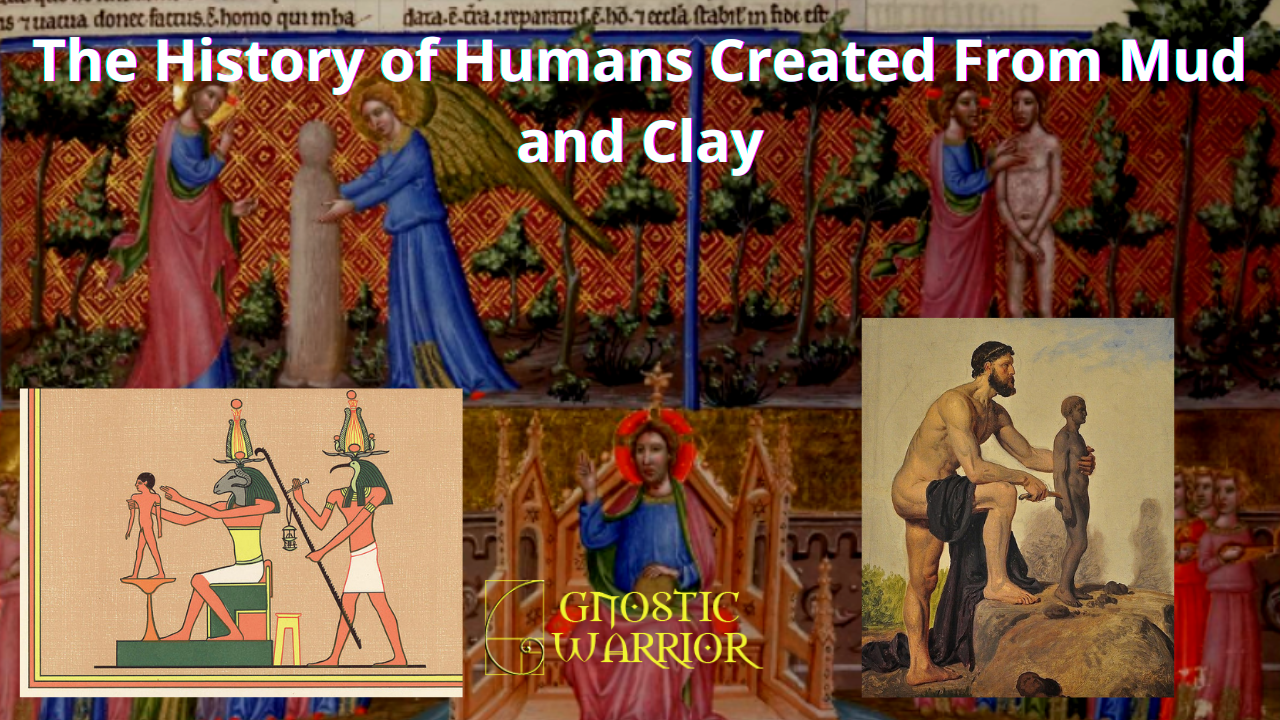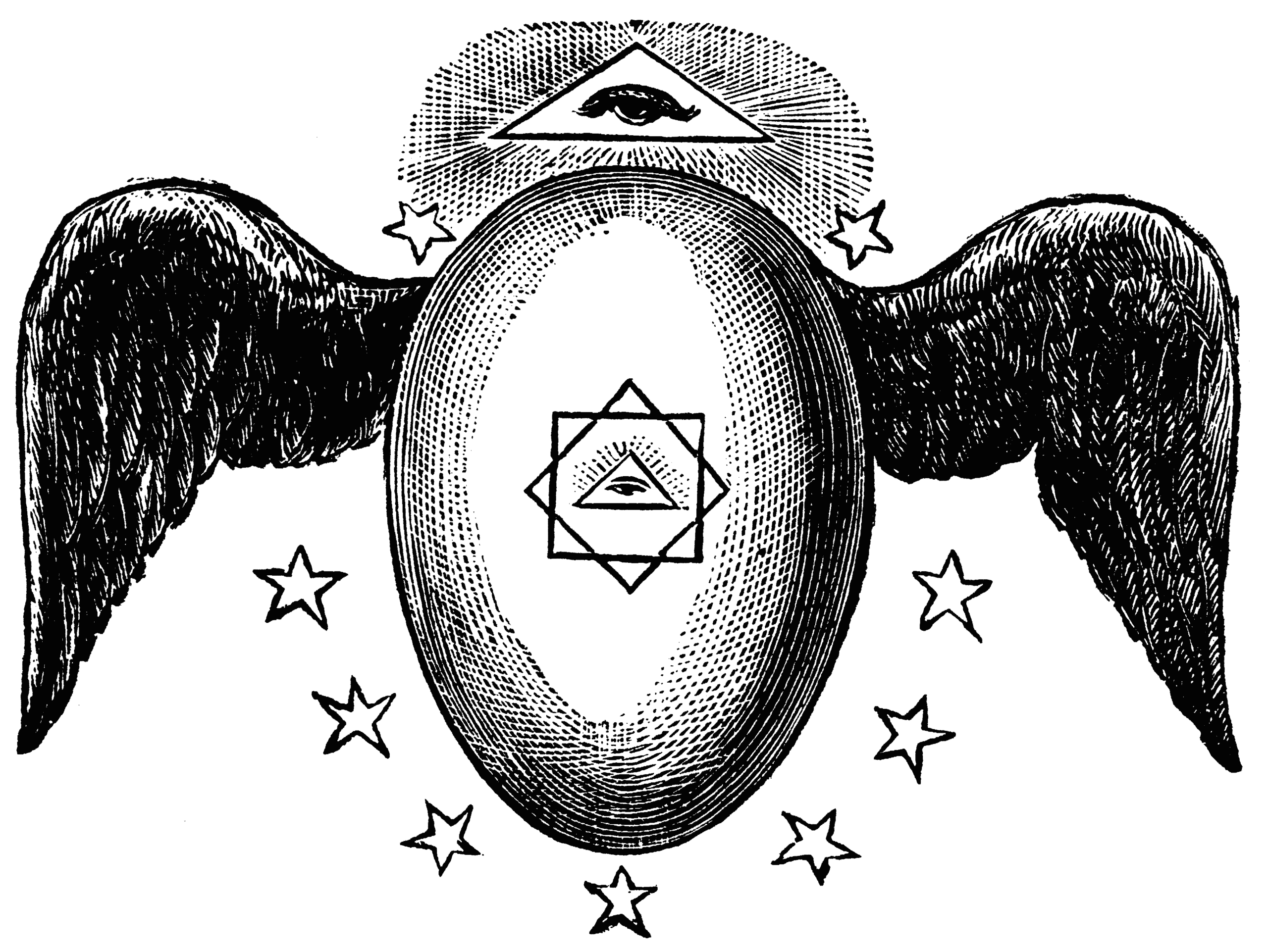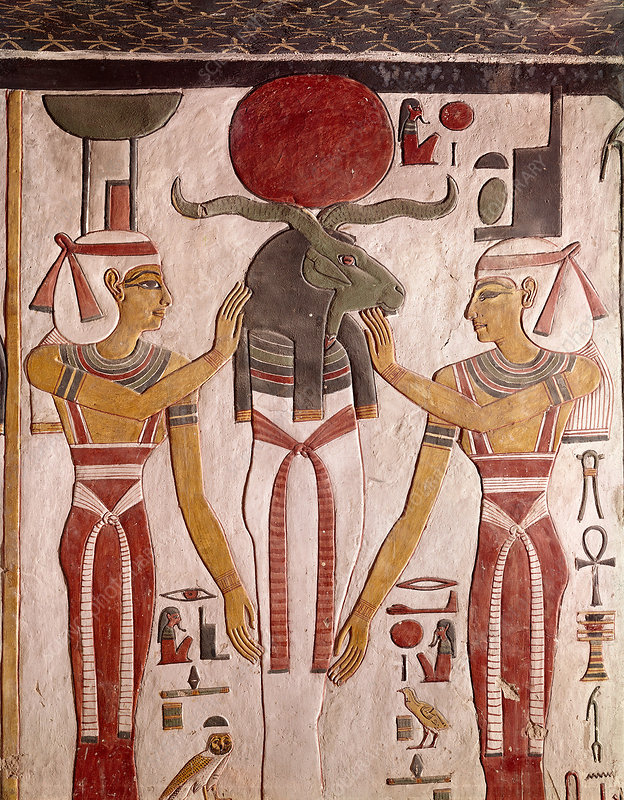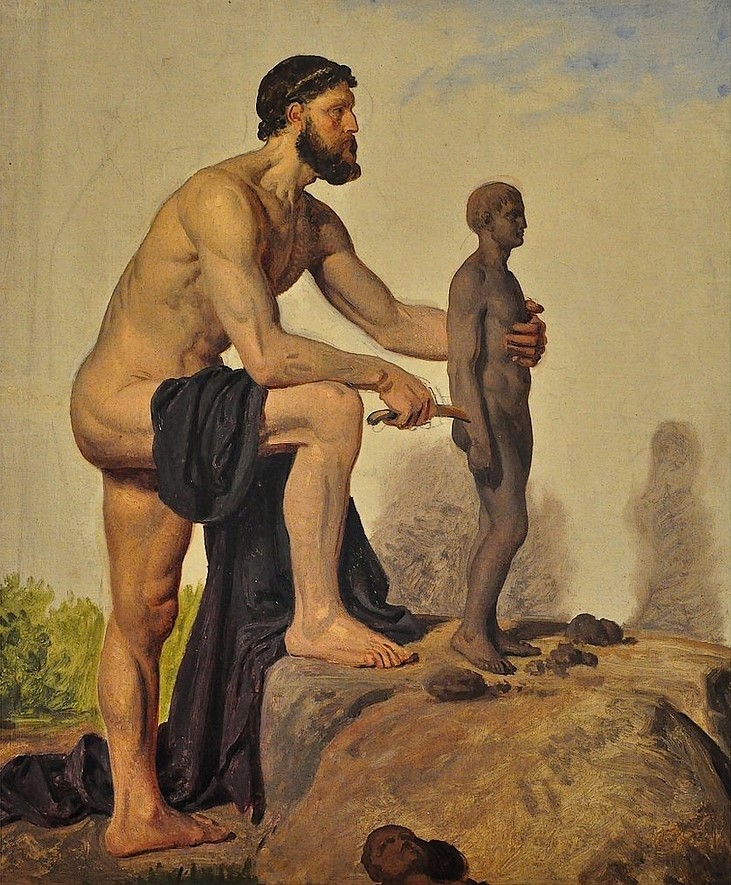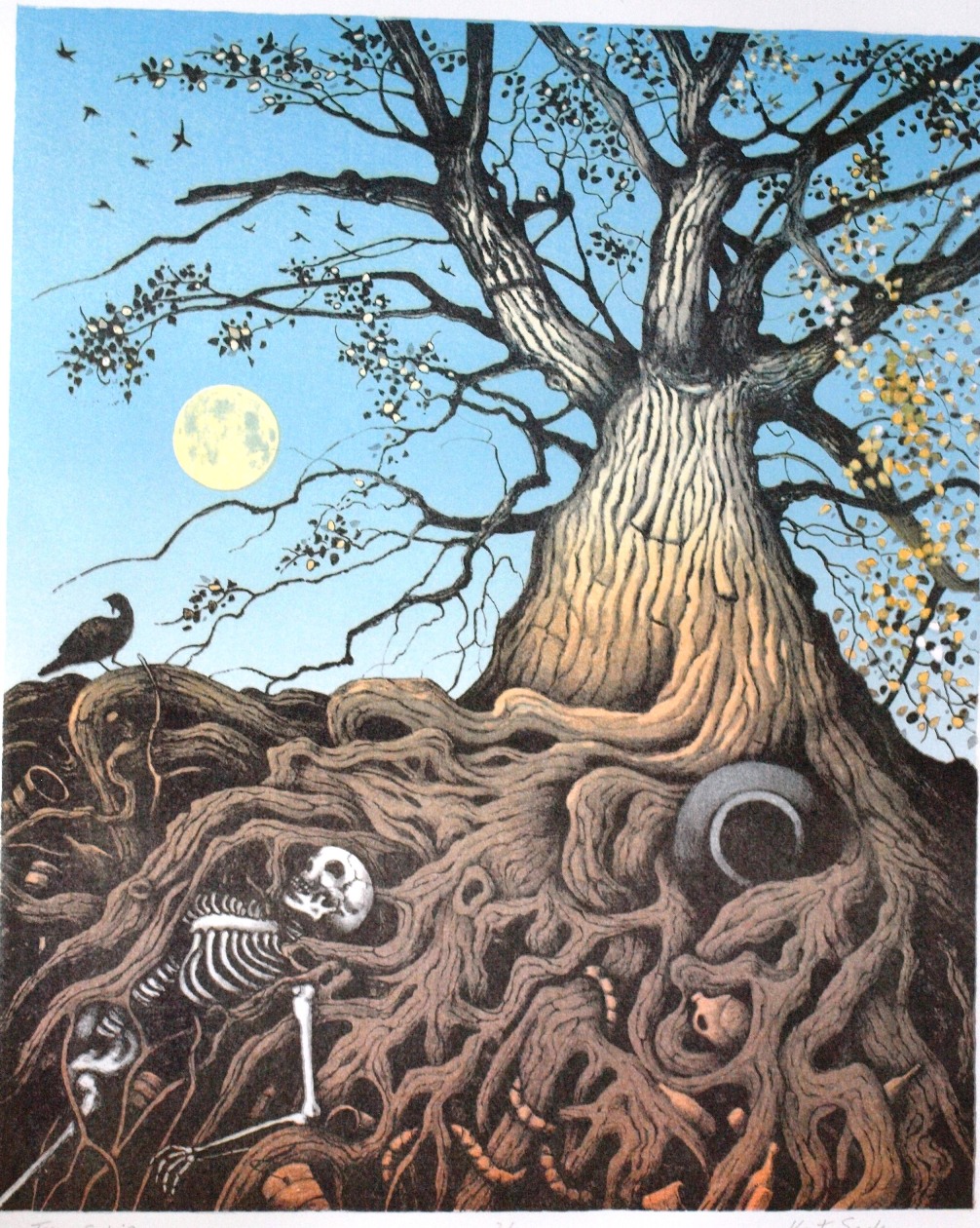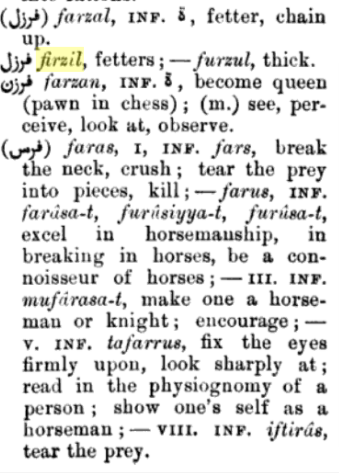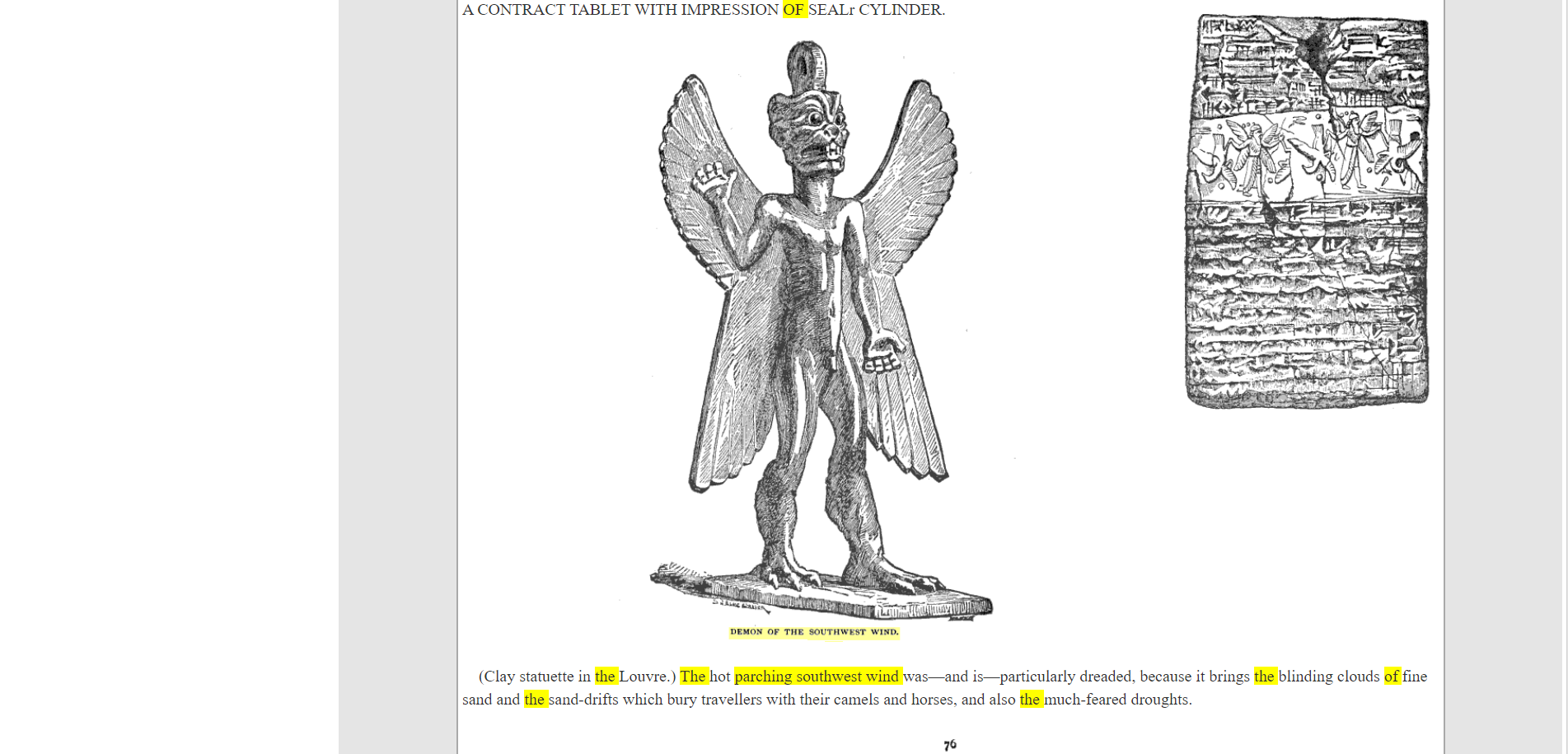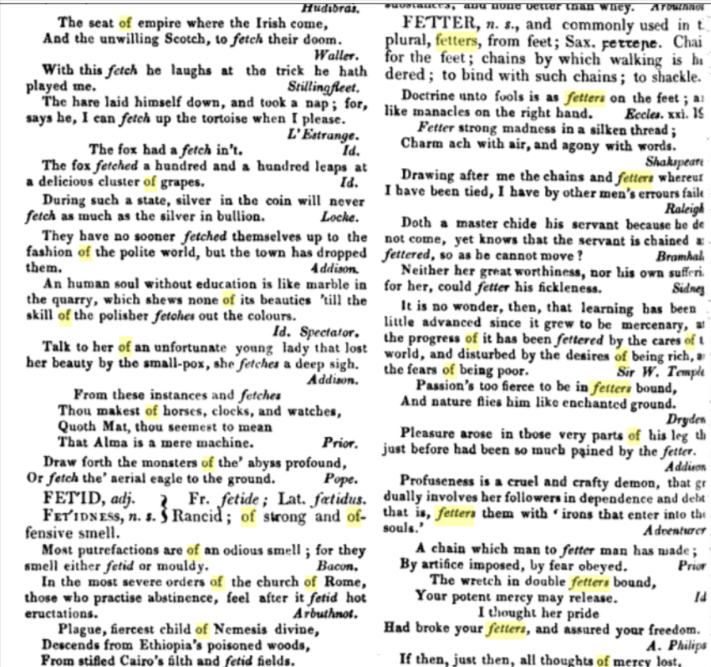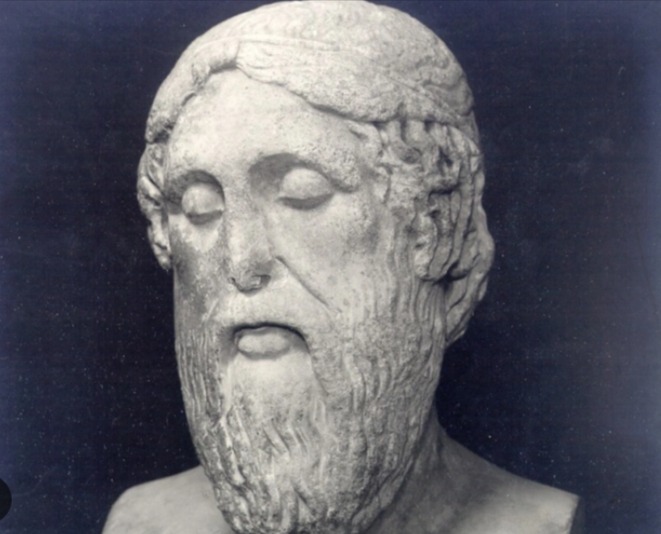

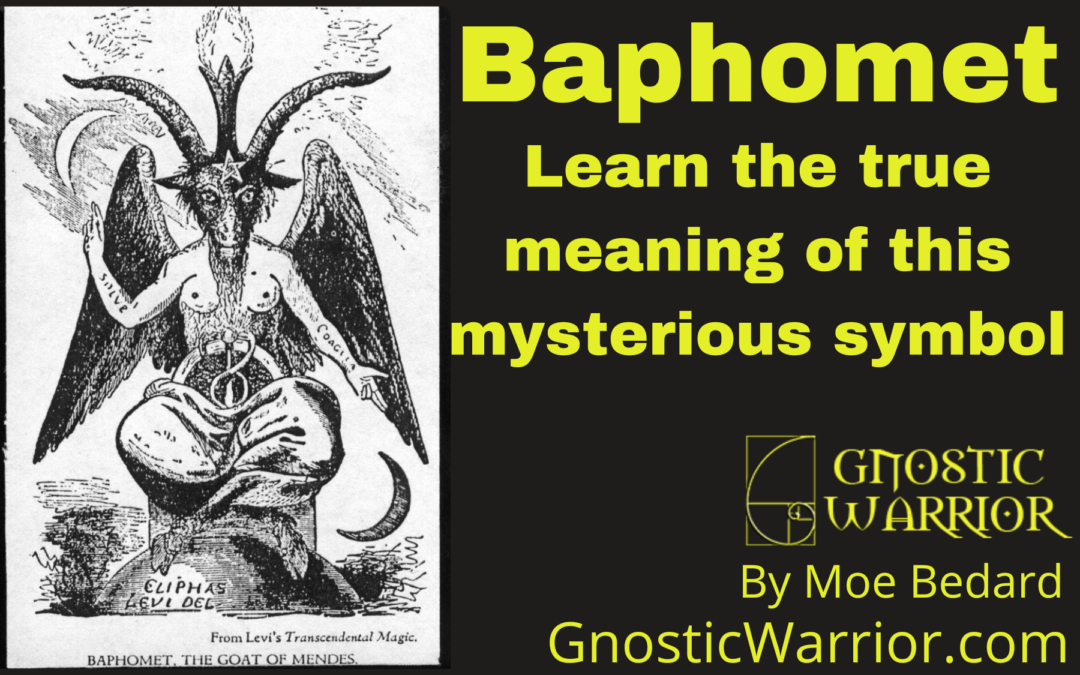
Baphomet: Learn the true meaning of this mysterious symbol
Notice: Trying to get property 'ID' of non-object in /home/nginx/domains/gnosticwarrior.com/public/wp-includes/link-template.php on line 394
Notice: Trying to get property 'ID' of non-object in /home/nginx/domains/gnosticwarrior.com/public/wp-includes/link-template.php on line 409
Podcast: Play in new window | Download (Duration: 18:47 — 35.1MB) | Embed
Subscribe: Apple Podcasts | Spotify | Email | Subscribe to the
In our modern era, no other occult symbol or drawing has caused so much controversy and misunderstanding as the mysterious goat-headed half-human hybrid known as Baphomet.
Laboring away in his studies in the suburbs of Paris, Eliphas Levi published his famous book on the occult sciences in 1854 called Dogme et Rituel de la Haute Magie (Dogma and Ritual of High Magic). In this book, Levi revealed the secrets of a mysterious figure called “Baphomet”.
Some people believe that Baphomet is an image of Satan or the Devil. While others claim that it is simply a symbol of man’s animal and spiritual nature in which it contains the secret to enlightenment.
But what did Eliphas Levi truly mean when he created this mysterious figure?
In modern times, the image of Baphomet is one of the most famous esoteric images.
It is used by several occult organizations, but very little is known about its true context and its meaning remains largely obscure. Much of the confusion about its meaning can be related to the various interpretations and even propaganda published over the last two centuries by authors and esotericists.
Eliphas Levi was a French occultist and author. He was born under the legal name, Alphonse Louis Constant in Paris, France on October 28, 1810. As a young man he studied law at the Sorbonne University and served as an officer in the French army during the 1830s.
Levi was exposed to Freemasonry during this time and later became a Freemason himself. He also became interested in Spiritualism, joining the “Society of Psychical Research” in London, England in 1875.
Because of his associations and writings, he was eventually imprisoned for several months. After his release, he then devoted himself to magical and mystical studies, which culminated in the publication of his Magnus opus, Dogma and Ritual of High Magic.
To understand the original meaning of Baphomet, one has to examine this book. You will find that he explains in detail the true meaning of various dark esoteric enigmas such as Black Magic and what he thinks of the Devil and Satan in order to educate people about its dangers.
But Levi’s main focus in this book was by conveying what he called the tradition of “true religion” which he believed would be the final “synthesis of religion, science, and politics.”
The merging together of these various philosophies that have been opposing forces in society for many centuries up until modern times. As it relates to Baphomet, they are also inherent within humankind what is called “spiritualistic magnetism,” and mastering the balance of opposing forces.
That said, Baphomet was the symbolization of the equilibrium of energies within and outside the human body and mind.
One center of these opposing magnetizing forces comes from what Levi calls the “soul of the earth”, which could be equated with what religionists tell us literally is the Devil. The other force is a higher force associated with the “astral light.”
Man or women only become masters of themselves and their environment when they can properly harness and balance these energies. In other words, by being able to balance these forces, they become adepts in communion with the true creator or God.
I will go more in-depth on Levis teachings of magnetism, but first, it is important that I address the accusations made against Levi for being a Satanist and the figure of Baphomet representing Satan or the Devil.
Levi makes it clear in his book how he feels about the ideas of Satan, the Devil, and Lucifer.
He regarded the belief in Satan as nothing but “superstition.” (pg. 179) To Levi, this notion of Satan was not representative of dark forces, or Baphomet but human error (sin) and perversities. He wrote;
“Satan, as a superior personality and as force, does not exist. Satan is the personification of all errors, all perversities, and consequently also of all weaknesses.” (pg. 174)
In Levi’s opinion, the Devil was nothing but the malicious intentions of black magicians and their misled followers. Levi explains;
“The devil, in black magic, is the great magical agent employed for evil by a perverted will.” (pg. 175)
To Eliphas Levi, the practice of magic – either white or black – depends upon the ability of the adept to control the universal life force – that which again, he calls the great magical agent or astral light.”
Manly P. Hall wrote in his book, Dionysian Mysteries and Masonry that the image of Baphomet is NOT a Christian Devil but a symbol of the ancient alchemists representing Nature and natures God being a combination and balance of the forces, light and darkness;
“The Goat of Mendes or BAPHOMET whom the Templars were accused of worshipping is a Goat Headed deity, being formed of both male and female principles, with a Caduceus of Mercury in oplace of its Phallus.
One arm points up and one down , with the Latin ‘ Solve et Coagula’ written on them (meaning: ‘flow and ebb’)
This is NOT the image of a Christian Devil but a symbol of the ancient Alchemists representing Nature and natures God being a Combination & Balance of Male and Female forces, light and darkness, moisture and dryness.
The very principle of Hermes Trismegitus: As Above So Below” is what is symbolized by BAPHOMET…”
The name Baphomet is derived from Greek βαϕή baphe, βάπτω (“I dip”) “immersion” + Μῆτις, Metis “wisdom,” “skill,” or “craft.”
The meaning of Baphomet is “baptism” or initiation into wisdom.
In the book, “The mysteries of magic: a digest of the writings of Eliphas Lévi by Éliphas Lévi and Arthur Edward Waite, it explains the reason why this name was chosen.
“The Baphomets of the Templars, whose names should be spelt kabbalistically backward, is composed of three abbreviations—TEM OHP AB, Temple omnium hominum pads abbas, the father of the temple, universal peace of men. According to some, it was a monstrous head, according to others, a goat-shaped demon.
A sculptured casket unearthed in the ruins of an ancient commanday of the Templars was observed by antiquaries to be a baphometic figure, conformable in its attributes to our goat of Mendes and the androgyne of Khunrath. It is bearded, but with the entire body of a woman; in one hand it holds the sun, in the other the moon, joined to it by chains.
This virile head is a beautiful allegory which attributes to thought alone, the first and creative cause. The head here represents mind, and the female body matter. The stars, bound to the human form and directed by that nature of which intelligence is the head, have also a sublime significance.
The terrible Baphomet is, in fact, like all monstrous enigmas of ancient science, nothing more than an innocent and even pious hieroglyph.
Let us declare emphatically to combat the remnants of manichaeanism; that Satan, as a superior personality and power, has no existence.
THE DEVIL IN BLACK MAGIC IS THE GREAT MAGIC AGENT EMPLOYED FOR EVIL PURPOSES BY A PERVERSE WILL.”
In Dogma and Ritual of High Magic, Levi also clarifies that Lucifer is not Satan. He associates the fallen angel of the Bible with the concept of the Astral Light as it relates to his theory on magnetism. (pg. 178)
He explains that Lucifer and Satan came to symbolize the two opposing tendencies in human nature, which did not exist as independent forces but as positive or negative instrumentations of the Astral Light. (pg. 180)
Lucifer was depicted as the force of liberty and progress, while Satan stood for perversion and anarchy—this is the main reason why it is mistaken to identify the Baphomet with the inverted pentagram described in Rituel. (pg. 181)
Levi also addresses Baphomet and its association with the Knight Templar, who he maintained were Gnostics. They were the “torchbearers of the secret tradition of true Christianity, the “champions of humanity.” He said, “Thus the Templars became the torchbearers of the secret tradition of true Christianity, the “champions of humanity.” (pg. 28)
In “The Classics of the Kabbalah,” he claims that the true meaning of the Temple was “a social utopia and a symbol for the perfect government, based on an egalitarian hierarchy of intelligence and merit.” (pg. 29)
Levi clearly states who the enemies are of this revolutionary Gnosis of enlightenment. He believed that it would bring about the age of reason and the second coming of Christ. Levi wrote;
“the so-called orthodox sectarians who obstinately deny progress” and “claim authorities that they do not understand”:
“The ecclesiastical hierarchy is only temporary and must end when the time of the virility of humanity has come, the age of force and reason” which will bring “the second coming of Christ,” the explanation of all symbolical figures, and the erection of the Temple.” (pg. 30)
This is when Levi says, “Then the universal religion will finally be realized”:
But this purified religion will not be invented, it exists and it has always existed in humanity; but it had to be concealed by the sages, because the vulgar have been incapable of comprehending it. It is the tradition of all the great sanctuaries of antiquity, it is the philosophy of nature, it is God living in humanity and in the world, it is being demonstrated by being, it is reason proven by harmony, it is the analogy of the contraries, it is faith based on science and science elevated by faith.” (pg. 31)
Author, lawyer, and 33rd Degree Scottish Rite Freemason, Albert Pike quoted Éliphas Lévi extensively in his own Masonic magnus opus, Morlas and Dogma. On the subject of Baphomet, Pike wrote;
“Hierogliphically to express this law of prudence, they gave their mercury, personified in Egypt as Hermanubis, a dog’s head; and to their Sulpher, represented by the Baphomet of the Temple, that goat’s head which brought into such disrepute the occult Mediaeval associations.”
Pike says,
“The Gnostics held that it composed the igneous body of the Holy Spirit; and it was adored in the secret rites of the Sabbat or the Temple, under the hieroglyphic figure of Baphomet or the hermaphroditic goat of Mendes.” [Pike, op. cit., p. 734, teaching of the 28th Degree]
If one is to truly study Levi’s writings and not the opinions of others, one will understand that his intentions were to teach this ancient mystery tradition and clarify various magical teachings. One of the most important in what he describes as the “Great Work” is the eternal law of the opposing forces of nature in which the initiate is to strive to find an equilibrium between the two.
Levi wrote;
“This force was known to the ancients: it consists of a universal agent whose supreme law is equilibrium, and whose direction is concerned immediately with the great arcanum of transcendental magic. … This agent, which barely manifests itself under the trial and error of the disciples of Mesmer, is exactly what the adepts of the Middle Ages called the first matter of the great work.
The Gnostics represented it as the fiery body of the Holy Spirit, and it was the object of adoration in the secret rites of the Sabbath or the Temple, under the hieroglyphic figure of Baphomet or the Androgynous Goat of Mendes.” (pg. 13)
It is important that you understand that Eliphas Levi believed that the doctrines of the Church have been both corrupted and lost.
In the preface of his book, he explains the iconography of the various aspects and symbology that can be found in the figure of Baphomet. Levi wrote;
“The goat on the frontispiece carries the sign of the pentagram on the forehead, with one point at the top, a symbol of light, his two hands forming the sign of Hermeticism, the one pointing up to the white moon of Chesed, the other pointing down to the black one of Geburah.
This sign expresses the perfect harmony of mercy with justice.
His one arm is female, the other male like the ones of the androgyne of Khunrath, the attributes of which we had to unite with those of our goat because he is one and the same symbol.
The flame of intelligence shining between his horns is the magic light of the universal balance, the image of the soul elevated above matter, as the flame, whilst being tied to matter, shines above it.
The ugly beast’s head expresses the horror of the sinner, whose materially acting, solely responsible part has to bear the punishment exclusively; because the soul is insensitive according to its nature and can only suffer when it materializes.
The rod standing instead of genitals symbolizes eternal life, the body covered with scales the water, the semi-circle above it the atmosphere, the feathers following above the volatile. Humanity is represented by the two breasts and the androgyne arms of this sphinx of the occult sciences.” [3. Eliphas Levi, Dogme et Rituel de la Haute Magie]
The first connection of Baphpmet to modern Satanism arrives when the Brittish occultist and spy, Aleister Crowley adopted the symbol for the religion he invented called Thelema and his so-called Gnostic Mass. In addition, Satanic organizations like the Church of Satan and Satanic Temple have reappropriated and corrupted Baphomet for their own use and marketing purposes.
For example, Anton Szandor LaVey’s Church of Satan adopted the symbol in 1966. The Church of Satan’s current High Priest, Peter H. Gilmore even claims it was his organization that made the “Sigil of Baphomet” to be associated with Satanism and popular among Satanists.
In researching Eliphas Levi’s books, it appears that his main objective was to bring back what he called the “traditional and original Christian religion”, which he associated with the Ancient Gnostics and the Knight Templar who he said were the official “torchbearers” of this secret Gnosis. It is important that you understand this history because among the Freemasons, Templars, and other occultists, Baphomet was not associated with Satanism until our modern era.
How did this happen?
You will find that a common theme in Satanism is to sometimes alter or corrupt Christian symbols and other art and create what they for example Peter Gilmore of the Church of Satan says in his own words, “blasphemous parodies.” For example, the upside down cross and also the original pentagram on Baphomet’s head by Levi they invert to create what is called the “inverted pentagram,” which “changes its original meaning.”
Here is a quote from Peter H. Gilmore on the Church of Satan on their own website stating these facts:
“Examine the literature and imagery predating the founding of the Church of Satan in 1966: Satanism is usually denoted by inverted crosses or crucifixes and blasphemous parodies of Christian art. There are also images of goats and devils, and demons—along with their sigils from grimoires—all used to represent the “satanic.” However, the complete graphic which we now call the “Sigil of Baphomet” only became associated as the foremost symbol of Satanism in the public and media consciousness after the founding of the Church of Satan and Dr. LaVey’s use of it.
From its inception, the Church of Satan has been constantly spotlighted in print, film, and television media all over the globe, so this was to be expected. The word “Baphomet” dates back to records of Templar trials, and there are ongoing discussions concerning its derivation and meaning. However, there is no clear evidence that the symbol which we in the Church of Satan call “Baphomet” is similarly derived; the evidence, if any, has not yet been released in any public forum.”
Then you have other organizations like the Satanic Temple who not only use the Satanic version of Baphomet for their own marketing purposes, they create statues and controversy all around the world with their devilish antics. Further muddying the truth and cementing in people’s minds that the symbol of Baphomet is purely Satanic.
As I have explained and from Eliphas Levi’s own writings, you can clearly see that his intentions were not to represent Baphomet with the Devil or Satanism.
It was simply a drawing representing human nature, balance, and equilibrium of the astral light.
He believed that it was by the manipulation of this fluidic essence, that the phenomena of transcendental magic were produced, which were the secrets of magnetism.
This was the supreme arcanum of human existence.
To master it was to become a co-creator with God.
For Eliphas Levi, Baphomet is the iconic representation of the “true religion”, which were the revolutionary doctrines of Gnosis going back to the “Gnostics.” A time where he believed there was a battle between the “true” and “false” religion in which the false doctrines had usurped the true doctrines of the Gnostics.
Levi wrote in “The Kabbalistic Origins of Christianity” that the Kabbalah was the core doctrine of real Christianity, which contained the true teachings of the “universal tradition” that opposed the corrupted doctrine of the established Churches.
During the time of Saint Paul, there was a schism among the Gnostics between the traditional religion and the new initiated by St. Paul’s burning of the books of Hermes and Pythagoras. For Levi, this was needed in order to forge a new synthesis “in the name of the original and traditional dogma against the despotic and ignorant interpretations of the degenerated priesthood.”
By doing so, Paul walked in the steps of the “pacifistic revolutionary” Jesus Christ, who he believed to be a successor to Osiris, Orpheus, Moses “and all great men of enlightenment.”
This traditional religion and honoring the chain of wise initiates was broken when the philosophical battle took place between Paul and John. Lévi sided with the teaching of Saint John who he said was initiated by Jesus and wrote his Apocalypse in the “hieroglyphic language” handed down to him.
A meaning which was lost by “the official Roman Church.”
This paved the way for “Catholic absolutism” with the followers of the Church being misled to attack the Gnostics: “From the burning of books they came to the burning of their authors.”
Meanwhile, Levi said that true Christianity, the original Gnosis of the Ancients was preserved by various secret sects such as the Templars and Freemasons.
He believed that the ultimate goal of preserving these teachings was for “the realization of the divine ideal in humanity.”
For Levi, he was a warrior for God whose sole task was to bring Light to the only true Tradition with the ultimate goal of establishing a perfect social order ruled by the wise.
– Moe Bedard
SOURCES:
- Eliphas Levi – Dogme et Rituel de la Haute Magie (Dogma and Ritual of High Magic)
- Many P. Hall – Dionysian Mysteries and Masonry
- Éliphas Lévi and Arthur Edward Waite – The mysteries of magic: a digest of the writings of Eliphas Lévi
- Albert Pike – Morals and Dogma
- Church of Satan – The History of the Origin of the Sigil of Baphomet and its Use in the Church of Satan
- Eliphas Levi – The Kabbalistic Origins of Christianity
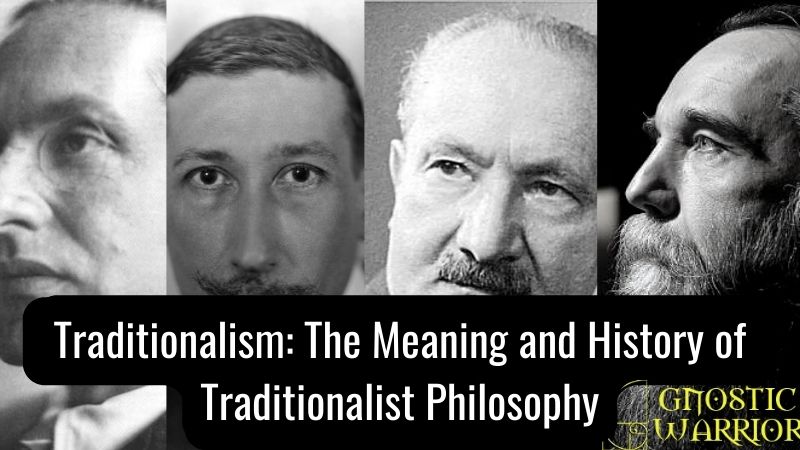
Traditionalism: The Meaning and History of Traditionalist Philosophy
“Traditionalism is the only way to preserve the world.” – Julius Evola
Traditionalism is a reactionary and counter-revolutionary movement that arose in the early 20th century. Traditionalists believe that there is a spiritual decay in Western civilization owing to modernity and rationalism, which they see as being based on Judeo-Christian values and defines itself as “a philosophy which favors traditionalism, hierarchy, and authority”.
The word “Traditionalism” derives from the Latin word tradere, which means “to hand down”. The term “traditionalist” derives from “traditional”, which refers to the commonalities between all traditions, or customarily accepted beliefs and practices.
It is a school of thought that believes in the primacy of the wisdom and knowledge of traditional societies, especially those that existed prior to the modern period or what is often called Modernity by Tradionialists. They affirm that there is a transcendent order, which constitutes the objective reality of human experience.
The transcendent order as the “Traditional” or “Perennial” Way, and and advocates the return to “the Old Ways” which they believe has been manifested in all cultures at all times.
Over the last 200 years, Traditionalist thinkers have criticized modernity and liberalism, while advocating a return to our original values and ways of life. It is not a unified movement, but rather various different traditions that have existed throughout history under this name.
The term “traditionalism” was first used as a self-descriptor by French writer François-René de Chateaubriand in 1821, although tradition had been used prior to this by Joseph de Maistre and other counterrevolutionaries. These ideas have been popularized by a number of writers and thinkers in Europe, Russia, and America. They include Julius Evola, René Guénon, Martin Heidegger, Carl Schmitt, and Aleksandr Dugin.
Traditionalism can be seen as an attempt to preserve the traditionalist ethos against modernizing trends in Western culture. This includes preserving the identity and customs of one’s people from the erosion of globalism and multiculturalism, which are seen as diluting traditional values and religion with foreign influences; for example: Christianity replacing paganism in Europe or Hinduism replacing Buddhism in India.
The traditionalist worldview sees humanity as being on a spiritual journey through time; it sees all religions as having an essential truth about this journey; it sees modernity as bringing us further away from this truth; and it sees modernity as being associated with increasing inequality, injustice and environmental destruction.
Traditionalists reject universalizing ideologies such as rationalism (the idea that reason is supreme), liberalism (the idea that individual rights are paramount) and socialism (the idea that government should be controlled by the community).
They have traditionally been opposed to both communism and capitalism, which they regard as modern manifestations of an anti-traditional system of society. They are also often opposed to progressivism and industrialization for similar reasons.
Traditionalists believe these ideologies are contrary to human nature and lead to moral decay because they undermine natural hierarchies.
Many Traditionalists believe that our present condition is due not just to bad politics but also to bad ideas (because politics are always based on ideas). Bad ideas that simply need to be destroyed. They believe that there has been a decadence of thought since modern times began, which has resulted in all kinds of irrational beliefs such as materialism, atheism, and liberalism.
Traditionalists believe that various aspects of society and social life are organic wholes that exist whether or not humans recognize or acknowledge their existence. They further believe that these wholes have an inborn “spirit” or “soul” that one can only understand intuitively, rather than rationally.
Traditionalists thus reject abstract rationalist notions like natural rights and social contract theory as a basis for legitimacy and authority. Instead, they espouse an organicist conception of society as a living organism with a spiritual soul through which “legitimate” authority must be exercised.
It is opposed by both liberal individualism and modernist historicism in all its forms. It rejects what it sees as the rootless cosmopolitanism inherent to modernity—including capitalism, individualism, egalitarianism and multiculturalism—as well as the secularization of religion into a mere human institution devoid of its transcendent purpose.
They argue that society has been thrown into confusion by waves of materialistic thinking and has forgotten its spiritual foundation. They wish to restore religious practices and beliefs that are not bound by time or space.
Some traditionalists support monarchy or other forms of non-democratic government; others support various types of autocracy or oligarchy; some support democracy if it can be shown that it is consistent with traditional values; others oppose all forms of government intervention in political affairs.
They believe that the way forward is not to be found in any political ideology — liberal or conservative — but rather in a return to what they see as ancient wisdom traditions which developed over thousands of years before Christianity arrived in Europe (and which existed even before Judaism and Islam).
Traditionalism has been accused of being related to several other movements within the 20th century, including far-right politics, fascism, and Nazism. However, most traditionalists adamantly reject these associations.
Meet the Traditionalists
The Traditionalist School (la scuola tradizionalista) was founded by Julius Evola (1898–1974), an Italian philosopher who rejected modernity in favor of an idealized past. He argued that there was a perennial spiritual conflict between Tradition and Modernity, and sought to restore what he saw as the virtues of ancient Greece and Rome: hierarchy, excellence, spirituality and heroism.
In his book Revolt Against The Modern World, Evola presents an extremely critical view of modernity and industrial civilization. He believed that Western civilization has been in decline since the 19th century because it had abandoned its traditional roots in favor of democracy, socialism and materialism. Evola argued that this decline could only be reversed by the development of an elite which would lead society towards an organic hierarchical order based on spiritual principles rather than liberal individualism.
Evola claimed that those people who are connected to their ancient traditions are those who are truly awake. He wrote in Revolt Against the Modern World;
“Beside the great “currents” of the world there are still individuals who are rooted in terra firma. Generally speaking, they are unknown people who shun the spotlight of modern popularity and culture.
They live on spiritual heights; they do not belong to this world. Though they are scattered over the earth and often ignorant of each other’s existence, they are united by an invisible bond and form an unbreakable chain in the traditional spirit… by virtue of these people, Tradition is present despite all; the flame burns invisibly, and something still connects the world to the superworld.
“They are those who are awake.” Evola wrote;
Evolian Traditionalism is thus a form of counter-Enlightenment philosophy, and stands in opposition to modernity, democracy and egalitarianism. It holds that the world changes in cycles: civilizations rise while others fall; humanity moves from one state of being to another. To Evola, these cycles corresponded with a natural law: what he called “metaphysics”.
According to the scholar Franco Ferraresi, he “is considered one of the most innovative and influential theorists of ‘traditionalism’—a current of thought within fascist ideology which emphasizes the need for a hierarchical social order based on natural differences.”
Next to Evola, René Guénon (1886–1951) was the most prominent figure of the traditionalist movement in twentieth-century France. He was a prolific writer whose works were influential all over the world and he also had an impact on Hinduism, Buddhism and Islam, as well as Christian theology.
Guénon developed the “Primordial Tradition”, in which he presented his works as elaborative of “traditional metaphysical principles” through his publication, “Études tradition nelles.” He wrote another important book on Traditionalism called Crisis of the Modern World (1927) where he explains how modern society is facing a crisis and how this crisis can be solved by returning to our spiritual roots. Evola wrote the introduction to the book.
In 1931 he wrote his most famous work, “The Reign of Quantity and The Signs of The Times“. This book has been translated into several languages and continues to be studied by seekers all over the world.
Guénon’s work is characterized by its uncompromising defense of traditionalism and its rigorous criticism of modernity. His writings have been described as “an unsystematic exposition of traditional doctrines”, but Guénon himself maintained that his work could be understood only within the context of the whole tradition; consequently, many of his works are often referred to as “classics”.
Guénon wrote;
“Where is the notion of a real hierarchy still to be found in the modern world?
Nothing and nobody is any longer in the right place; men no longer recognize any effective authority in the spiritual order or any legitimate power in the temporal; the ‘profane’ presume to discuss what is sacred, and to contest its character and even its existence; the inferior judges the superior, ignorance sets bounds to wisdom, error prevails over truth, the human is substituted for the Divine, earth has priority over Heaven, the individual sets the measure for all things and claims to dictate to the universe laws drawn entirely from his own relative and fallible reason.
‘Woe unto you, ye blind guides,’ the Gospel says; and indeed everywhere today one sees nothing but blind leaders of the blind, who, unless restrained by some timely check, will inevitably lead them into the abyss, there to perish with them.”
After Guénon, the next most important person was German philosopher and a founding member of the Frankfurt School, Martin Heidegger (1889-1976). His ideas have had an enormous impact on western philosophy, yet he remains one of the most difficult and controversial philosophers to read.
Although Heidegger did not claim to be or belong to any of the Traditionalist groups that Evola and Guénon had developed and was sometimes critical of Traditionalism. Although he is often described as a Traditionalist and a favorite philosopher for people such as Alexandr Dugin, because he believed that modern society had lost touch with its past and we needed to preserve it.
Heidegger said this about Traditionalism:
“There are many different kinds of traditionalism. Some people think that tradition means simply living in the past, but this is not true. Tradition only means maintaining something that has been handed down from generation to generation.”
“Tradition is not just re-enacting things from the past; it means preserving them so they can be handed down to future generations.”
One of his most important contributions to philosophy was his analysis of the concept of being and is often referred to as his “Being and Time” period. In this early period, Heidegger attempted to develop a philosophical hermeneutics that would be able to interpret all forms of human existence in view of their being in the world.
In particular, Heidegger made a distinction between two types of being: ready-to-hand (Zuhandenes), and present-at-hand (Vorhandenes). The former is an understanding of being that is based in everyday life, where things are useful to us and part of our lives; the latter is an understanding of being as something detached from our lives, which we can examine through reason alone.
This distinction has become known as Dasein-analytic or existentialism. In this kind of thinking we come to understand ourselves as human beings – in other words, we are not simply objects but subjects (what Heidegger calls Dasein). We are not simply products or objects, but subjects who have their own agency (being able to make choices).
His analysis focused on understanding being-in-the-world as being-with others (Mitsein). This approach was indebted to Martin Luther’s doctrine of justification by faith alone and Immanuel Kant’s conception of practical reason.
Heidegger also stated that human existence cannot be understood apart from its relationship with other people in the world. This relationship is always already there before us, as we find it in our everyday dealings with others. But it is not something that can be analyzed by science or philosophy, because it is always changing according to circumstances and traditions particular to each historical era.
He argued that science and technology were destroying our sense of tradition and replacing it with calculative thinking. This led to humans becoming soulless “dwellers” in technology-dominated cities who are unable to think deeply about their lives or to have meaningful experiences with other people.
Heidegger wrote;
“It is not enough to think of a tradition as a kind of intellectual property, in which we have invested our money and labor. We must also recognize that our tradition is directly responsible for our present condition, and that we are therefore obliged to it.
This obligation is what makes it possible for us to overcome the danger of becoming “strangers and sojourners” in the world.”
He famously said that “only a god can save us” from technology and industrial society (“Der Spiegel” interview 1966). His critique of modernity has been compared to that of Friedrich Nietzsche — another philosopher who was accused by some critics of being anti-Semitic — but it is also true that Nietzsche thought highly of Heidegger’s work.
Heidegger’s work remains controversial because of its association with National Socialism — he was a member of the Nazi party from 1933 until 1945 — and because of his political views after World War II.
If we are to examine this time period with the German NAZI regime, we can see that they had attempted to preserve the Traditions of their race and their so-called Arayan ancestors who were seen as biologically superior to other racial groups. Adolf Hitler promoted his ideaologies about Germany’s ancestors in his 1925 book, Mein Kampf. The think tank called The Ahnenerbe (German: [ˈʔaːnənˌʔɛʁbə], ancestral heritage) operated between 1935 and 1945 to promote their doctrines with a group of Germany’s leading scholars and scientists.
Traditionalist conservatism takes its name from the Traditionalists, a group of French intellectuals known as Les Veilleurs or “The Watchers,” who first met in 1928 at the Institut Catholique de Paris, a Jesuit-run graduate university dedicated to training priests for the Catholic priesthood.
The original members were: Charles Champetier (1890–1946), Marcel Haedrich (1892–1952), Étienne Gilson (1884–1978), Louis Massignon (1883–1955), Jean Ousset (1905–1974) and Louis Lecerf (1906–1972). They were joined later by such men as Henri de Lubac, Yves Congar and Jean Daniélou. The movement was part of a wider effort to defend the Roman Catholic Church against modernists who questioned some of its teachings.
Today, Alexander Dugin (Russian: Алекса́ндр Ге́льевич Ду́гин; born January 7, 1962) is one of the most influential and controversial Traditionalist thinkers on the world stage today. He is a Russian political scientist known for promoting a “traditionalist” worldview through his leadership of the International Eurasian Movement (Russian: Международное евразийское движение), a political party called “The Conservative Party of Russia”, and several books about geopolitics.
Dugin has been described as “Russia’s chief ideologist” by The New York Times. His work has been translated into many languages, including English, Spanish and Portuguese. He has influenced political movements from Ukraine to Brazil and Venezuela to Africa by providing them with a philosophical basis for their actions.
Dugin has expressed admiration for Julius Evola, who became an early influence on his thought and introduced him to Traditionalism; as well as for Martin Heidegar and Carl Schmitt, whose ideas on geopolitics influenced Dugin’s later works on geopolitics; and René Guénon (who Dugin calls “the master”) who introduced him to Gnosticism and Manichaeism.
He defines Traditionalism as a philosophy that “questions modernity” and advocates for a return to traditional values as “the recognition of the perennial character of human nature”. What is true, good and beautiful.
Dugin recently said;
“Traditionalism is a philosophy of life and a system of values based on the veneration of the past, particularly with regard to the preservation of what is perceived to be true, good, and beautiful.”
Dugin’s philosophy called Neo-Eurasianism or Fourth Political Theory (4PT). The 4PT is a syncretic ideology combining traditionalist ideas from Eurasian religions and European New Right with Russian nationalism and anti-liberalism. In 2006 he wrote The Fourth Political Theory, which proposed a new ideology for Russia based on traditionalism, conservatism and nationalism.
Dugin believes that Russia should be an empire like it used to be before Peter the Great. In his book The Fourth Political Theory, he argues for a postmodernist approach to politics:
“The Fourth Political Theory is thus openly opposed not only to liberalism but also to Marxism and fascism; it rejects them both as modernist ideologies that deny the uniqueness and specificity of each historical epoch.”
In 2007 he founded the Eurasia Party and in 2011 he left the party to create his own political party called Eurasian Youth Union (ESYU). The Eurasia Movement was established to promote Russian foreign policy in opposition to American hegemony. He has been described as a “key intellectual proponent” of the idea that Russia is destined to lead a new empire in place of the Soviet Union, which Dugin considers to have been usurped by Atlanticism (meaning liberalism) and globalism (meaning capitalism).
In a recent interview, Dugin speaks about the meaning of tradition and its relation to the West. He also talks about his role in Russia as a “philosopher” and what he hopes to accomplish with his work.
Question: What is your understanding of tradition?
Alexander Dugin said;
“Tradition is a complex concept. It is not just something that has existed for a long time, or that has been preserved from generation to generation. Tradition does not mean conservation of something that already exists; it means renewal and expansion of something that already exists.
Tradition is not the past but the future being born in the present,” Dugin said.
“Tradition is not a dead past but an alive future: when we look at tradition we see history being born again in us as we live our lives today. This concept is difficult for people today because they are used to living in front of their TVs or on Facebook where everything becomes “old news” within hours or minutes–or even seconds!
There’s no sense of continuity here; it’s all just fragments of information from various sources that have nothing in common except their ephemerality. We don’t live in one place anymore either; we’re constantly moving around from one place to another so there’s no sense,” he said.
While Dugin’s views are often described as fascist or neo-fascist, he rejects these labels as inaccurate and misused. In an interview with liberal Russian talk show host Ksenia Sobchak, Dugin claimed that any comparison between his views and those of Adolf Hitler was “ridiculous”.
He instead prefers to describe himself as a Traditionalist who advocates for “conservative revolution” against modernity.
Dugin recently said in an interview;
“The Traditionalists are not only a school of theology, but also a school of politics, and they have much to say about the laws of history. In particular, they believe that there is a law of cycles in history, according to which societies rise and fall according to their adherence or lack thereof to Tradition.
“The most important aspect of this Tradition is what I call the “vertical axis,” meaning the transcendent dimension of human existence. This does not mean that Traditionalists reject science or rationality — far from it! But it does mean that they think that there are levels of understanding in reality beyond our materialist vision; that is why we need both science and religion.”
In a recent interview I conducted with Alexandr Dugin on the Gnostic Warrior Podcast, he told me that this battle is not only against what he calls a Liberal Dictatorship that seeks to destroy our ancestral traditions and philosophical ideas, but for our very souls and for eternity.
He is not fighting just for the Russian Traditions, but the whole world’s Traditions.
We spoke about his 4th Political Theory and how it is the only political system right now that honors people’s traditions across cultures while bringing these issues to the political arena.
MOE: So you’re, you’re fighting for everybody’s traditions.
DUGIN: Exactly. I don’t fight only for the Russian tradition, my tradition, my church. I’m Christian. But I defend the principles that religion and tradition are not something that belongs to the past.
I argue that it belongs to eternity, but eternity is now, the past is now, and it will be tomorrow.
So that is the fight on the side of eternity, against the dictatorship or the temporality of the time of becoming. And we consider all these three models, ideology, communism, liberalism, and the French.
They are all based on a secular understanding of history. They are founded in a materialistic understanding of the world.
They don’t believe in eternity. Eternity doesn’t exist. There is only time. There is only this world. There is nothing outside of it.”
Here is my interview with Dugin.
In another article for The National Interest, Dugin is rallying the global troops of Traditionalists to join the fight against this dictatorship:
“All of us who consider ourselves traditionalists — whether religious or not — should join our efforts against the dictatorship of relativism and consumerism, against globalisation and its political instrumentality.”
I have found that a lot of what Dugin advocates for in the name of Tradition makes perfect sense. While his views at times can be considered extreme, we can also make a great case that the current Liberal Dictatoship are even more extreme to the point they seek to destroy all our Traditions – what is good, true and beautiful.
Instead, they want to indoctrinate the people and our children into their Godless Lberal religion that pisses on the past and makes up their own absurd ideologies, from changing the meaning of biology to what it means to be a man or woman and have a family by changing their genders and their identities.
So, how does a modern day Traditionalist fight against what seems to be a massive army of Liberal clones hell-bent on destroying your Traditions and indoctrinating your children into their Global Death Cult?
I will leave you with a quote by Julius Evola that accurately describes how Traditionalists battle the dregs of Modernity. Evola wrote;
“It is necessary to have “watchers” at hand who will bear witness to the values of Tradition in ever more uncompromising and firm ways, as the anti-traditional forces grow in strength. Even though these values cannot be achieved, it does not mean that they amount to mere “ideas.” These are measure.
Let people of our time talk about these things with condescension as if they were anachronistic and anti-historical; we know that this is an alibi for their defeat. Let us leave modern men to their “truths” and let us only be concerned about one thing: to keep standing amid a world of ruins,” Evola wrote. (Revolt Against the Modern World)
In other words, let the crazy Liberals keep spewing their irrational beliefs and acting like chimps. The more they do so, the easier it will be to defeat their ignorance and lies.
It is Traditionalist Watchers today, like Dugin, who believe that this is the Great Awakening and that we are in a war against Modernity. What he calls the “Serpents of Wisdom versus Serpents of Capitalism.”
It is philosophers like Dugin who are ready to defend these Traditions and, if needed, destroy Modernity into an eternal heap of ruins with Traditional ideas, and, if needed, one rocket launcher at a time.
One last final thought.
As an American, I’m on the side of Traditionalists and wish to fight for the original American ethos that honored their ancestors Traditions while also granting the people Liberty and the pursuit of happiness.
This is being stolen from us all as we watch the liberals indoctrinate our children with their bad ideas and they piss on our country’s values as it all burns right before our eyes.
Dugin is right. This is a battle for eternity.
One that I believe that this will culminate into not only a world war of ideas, but the final battle for the World Soul.
May the best ideas, men, and women win.
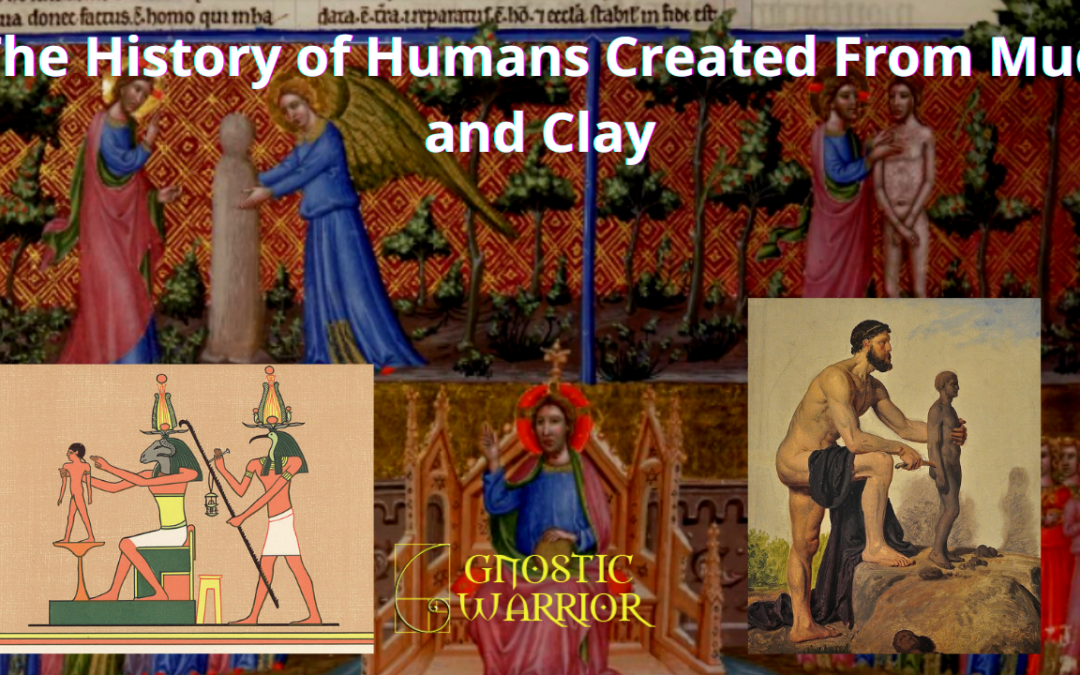
The History of Humans Created From Mud and Clay
Many ancient historians, the Bible, Koran (Quran), Greek myths, and even Chinese legends have claimed for thousands of years that all life came from the earth forming from the dust, mud, or clay. In the Abrahamic religions, Adam is said to have been made from clay that God molds into the shape of a man and then breathes life into him through his nostrils.
In the Scripture, we learn, “Then the LORD God formed man from the dust of the ground and breathed the breath of life into his nostrils, and the man became a living being.” (Genesis 2:7) Genesis 13:16 describes how the LORD made Abrahams descendants of the dust – “I will make your descendants as the dust of the earth, so that if anyone can number the dust of the earth, then your descendants can also be numbered. “Arise, walk about the land through its length and breadth; for I will give it to you.”
The Koran describes how Allah molded Adam from clay: “We created man from sounding clay, from mud molded into shape…” (15:26). And, “He began the creation of man from clay, and made his progeny from a quintessence of fluid” (32:7-8). This was not just any clay but an extract of clay that was sticky in nature as it is said, “We created man from an extract of clay,” (Quran 23:12) and “Then inquire of them: Is it they who are stronger in structure or other things We have created? We created them from sticky clay.” (Quran 37:11)
In researching this concept, the first story in history we find is that of Môt (Mut, Maut, Mu, Ma, Maat, Mud) who was an Ancient Phoenician/Hebrew creator god of the material world, earth, life, and death. From, Môt, all seeds creation were made including, microorganisms, animals, and intelligent life were made, and into Môt, they will all reach death in the circle of life.
The earliest writer to describe Môt was the Phoenician historian and a priest of Byblos (City of the Book/Bible), Sanchuniathon (Phoenician: 𐤎𐤊𐤍𐤉𐤕𐤍), whose works were later translated by Philo of Byblos into Greek. Sanchuniathon refers to a great wind which merged with its parents, and that connection was called ‘Desire’ (πόθος). From its connection, Môt or Mud was produced from the fermentation (putrefaction) of a watery mixture, and out of this came every germ of creation and the generation of the universe including animals and humans.
Sanchuniathon had said, “So there were certain animals which had no sensation, and out of them grew intelligent animals, and were called “Zophasemin”, that is “observers of heaven”; and they were formed like the shape of an egg. So also Môt burst forth into the light, and sun, and moon, and stars, and the great constellations.”
The Phoenicians had depicted the Egg of Môt as an egg encircled by a serpent, which was originally attributed to the mythical founder of the Orphic mysteries, Orpheus. It was a religion centered on the teachings of the origins of life, procreation, immortality, mortality, creativity, and wisdom.
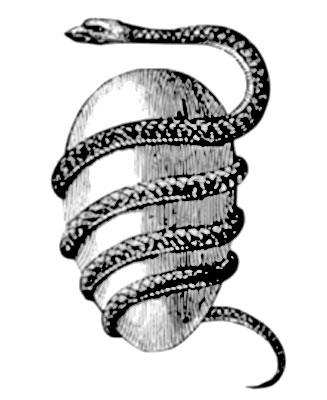 The first emanation from this egg, described in an ancient hymn, was Phanes-Dionysus, the personification of light. In Greek myth, particularly Orphic thought, Phanes is the golden-winged hermaphroditic primordial being who was hatched from the silver shining cosmic Orphic Egg. Called Protogonos (First-Born) and Eros (Love) — being the seed of gods and men — Phanes means manifestor or revealer, and is related to the Greek words “light” and “to shine forth.”
The first emanation from this egg, described in an ancient hymn, was Phanes-Dionysus, the personification of light. In Greek myth, particularly Orphic thought, Phanes is the golden-winged hermaphroditic primordial being who was hatched from the silver shining cosmic Orphic Egg. Called Protogonos (First-Born) and Eros (Love) — being the seed of gods and men — Phanes means manifestor or revealer, and is related to the Greek words “light” and “to shine forth.”
An ancient Orphic hymn addresses the serpent thus: “Ineffable, hidden, brilliant scion, whose motion is whirring, you scattered the dark mist that lay before your eyes and, flapping your wings, you whirled about, and through this world, you brought pure light.” The Derveni Papyrus refers to Phanes as, “Of the First-born king, the reverend one; and upon him all the immortals grew, blessed gods and goddesses and rivers and lovely springs and everything else that had then been born; and he himself became the sole one”.
Manly P. Hall had said about the serpent and egg, “The ancient symbol of the Orphic Mysteries was the serpent-entwined egg, which signified Cosmos as encircled by the fiery Creative Spirit. The egg also represents the soul of the philosopher; the serpent, the Mysteries. At the time of initiation, the shell is broke and man emerges from the embryonic state of physical existence wherein he had remained through the fetal period of philosophic regeneration.” Albert Pike had said – “Among the Egyptians, the serpent was a symbol of Divine Wisdom; and, with its tail in its mouth (Ouroboros), of Eternity. In the ritual of Zoroaster, it was a symbol of the Universe.”
Today in Memphis Misraim Freemasonry, it is referred to as the Cosmic Egg or Egg of the World and our main symbol.
From the teachings of Sanchuniathon and the translation by Philo, we get the Hebrew Scripture (Old Testament) in which Môt was translated and corrupted into the myths of Behemôt/Behemôth. He is King of all animals, including man of the land, and is listed as the primeval chaos-monster created by God at the beginning of creation in the Book of Job and is a form of the primeval chaos-monster created by God at the beginning of creation.
The Strong’s Exhaustive Concordance lists Mot as meaning, “be carried, cast, be cast out of, befallen in decay, exceedingly, falling down.” The modern word for death in Spanish is Muerte, in Latin, it is mortem, or morte in Italian and in Portuguese and Romanian, it is moarte. The Arabic it is spelled maut, in Sanskrit Mahat (Sanskrit: महत्), and in Persian, it’s faut. From mot where we get the words like moth, motion, motive, motley, and of course, mold, molded, and mucus which all spring from Môt AKA putrefaction and mold.
As I have explained many times before, this history and the stories we read today have been changed and intentionally obscured over the last 2,500 years. These false stories created the great myths of our Age and countless mysteries doctored by various priesthoods that have been retold by countless authors cloaking the truth of our origins in an endless trail of darkness, lies, and absurdities. This age-old fact leaves most seasoned authors, veteran researchers, and even the modern priest class lost in a sea of chaos, further perpetuating false narratives of our so-called history.
According to Eusebius of Caesarea, Philo had divided the works of Sanchuniathon into nine books. In the introduction to the first book, he claims that Sanchuniathon had known the earliest history of all nations from the creation of the world and was closest to the truth.
Eusebius tells us that after opening his translation acknowledging the truth found in Sanchuniathon’s writings, he admonishes more recent authors as having invented allegories and myths by untruly reducing the legends into “invented allegories and myths, and formed a fictitious affinity to the cosmical phenomena, established mysteries, and overlaid them with a cloud of absurdity, so that one cannot easily discern what really occurred and “priests who followed in later times wished to hide this away again, and to restore the mythical character; from which time mysticism began to rise up, not having previously reached the Greeks.”
Philo then had said:
‘These things I have discovered in my anxious desire to know the history of the Phoenicians, and after a thorough investigation of much matter, not that which is found among the Greeks, for that is contradictory, and compiled by some in a contentious spirit rather than with a view to truth.’
Once Philo established in his preface that the true cosmological history of the world from the Phoenician was changed, corrupted, and overlain with a mythical cloud of absurdity, he starts the first chapter with the creation of the universe where he mentions Môt had generated the “first seeds of the universe” from which every germ and intelligent creature grew from Môt. Philo had written;
“The first principle of the universe he supposes to have been air dark with cloud and wind, or rather a blast of cloudy air, and a turbid chaos dark as Erebus; and these were boundless and for long ages had no limit. But when the wind, says he, became enamored of its own parents, and a mixture took place, that connexion was called Desire. This was the beginning of the creation of all things: but the wind itself had no knowledge of its own creation.
From its connexion, Mot was produced, which some say is mud, and others a putrescence of watery compound; and out of this came every germ of creation, and the generation of the universe. So there were certain animals which had no sensation, and out of them grew intelligent animals, and were called “Zophasemin,” that is “observers of heaven”; and they were formed like the shape of an egg. Also, Mot burst forth into the light, and sun, and moon, and stars, and the great constellations.”
In the Book of Job, we are told that Behemot is the beginning of the ways of God, and the strength is found in his loins and his force in the muscles of his belly;
“Behold now Behemoth, which I made like I made you; he eats grass like an ox. Behold now, his strength is in his loins, and his force is in the muscles of his belly. He stiffens his tail like a cedar; the sinews of his thighs are knit together. His bones are like tubes of bronze; his limbs are like bars of iron. He is the beginning of the ways of God; let him who made him bring near his sword to him. Surely the mountains bring him forth food, where all the beasts of the field play. He lies under the thorny bushes, in the cover of the reed, and fens. The thorny bushes cover him with their shadow; the willows of the brook surround him. Behold, he drinks up a river, and hastens not; he trusts that he can draw the Jordan up into his mouth. Shall any one take him with his eyes open? Or pierce through his nose with a snare?” (Job 40:15-24)
In Ancient Egypt, the god, Khnum (Chnubis, Knubis, Chnum, Knum, or Khnemu) was a creator god credited with giving birth to all life and the Gods of Egypt. He was Chief of the Potter’s wheel, father of fathers who makes women pregnant, was Lord of the air and the field.
In Egyptian mythology, he creates humans from clay, which he made at a potter’s wheel before placing them into their mother’s womb was one of the earliest Egyptian deities, originally the god of the source of the Nile. He was later described as having molded the other deities as the “Divine Potter” and “Lord of created things from himself” and the “father of the fathers” and Neith as the “mother of the mothers” who later become the parents of Ra, who is also referred to as Khnum-Re.
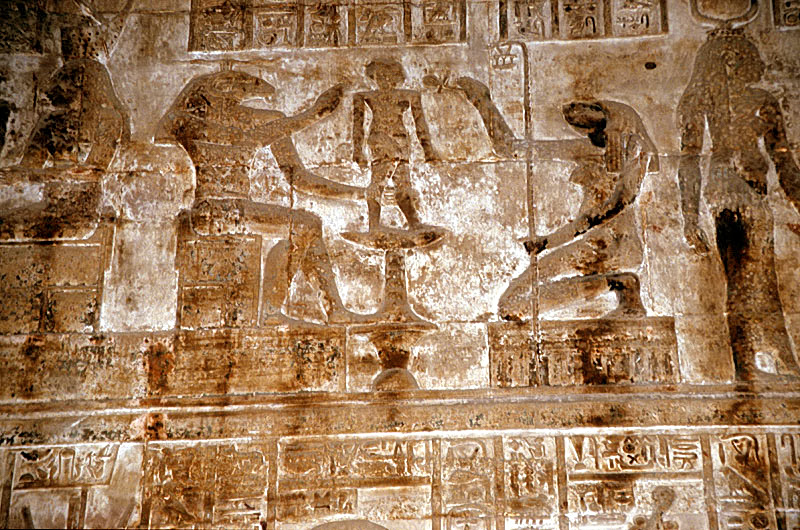 He was depicted as a ram-headed man.
He was depicted as a ram-headed man.
Khnum was credited with molding the great cosmic egg and he is also associated with the goddess Maat (truth) and Thoth, the divine scribe.
The female Goddess of Justice and the Lower World, the Land of Ghosts was called Maat (Mot, Mout or Mut). She was often depicted with the vulture headdress and sometimes a Lion’s head. In legends, she is “The opener of the nostrils of the living.”
In Greek mythology, Prometheus created and molded men out of water and earth. Greek myths tell us the creation story of how Prometheus and Epimetheus were spared imprisonment in Tartarus and were given the task of creating man. Other myths related how Zeus directed Prometheus and Athena to make images of clay, on which he caused the winds to blow breathing life into the figures.
After the first humans were created, legend tells us that Prometheus had caused them to walk upright and have features similar to the Gods but realized they lacked the wisdom so he defied the will of Zeus by traveling to Mount Olympus and stole fire from the gods, which became the beginning of civilization. Prometheus had taught man how to craft tools from iron ore, to plant crops and live through agriculture, and to craft weapons to defend themselves from wild animals. With fire, the newly created man began to thrive becoming superior to the animals of the wild.
“From her is the race of women and female kind:
of her is the deadly race and tribe of women who
live amongst mortal men to their great trouble,
no helpmates in hateful poverty, but only in wealth.”
The Greeks trace the word Môt to the creation of the material (mot-erial) world and mythicized in the legends of Mósos or Mothos and Tartarus. Homer had written in the Illiad, “You all to earth and water must return.” Writing at a later date, Apollonius says in his Argonautics ,“The earth’s produced from mud.” Virgil had proclaimed, “Then earth began to harden, and include The seas within its bounds, and things to take Their proper forms.” (Eclogue vi)
According to Chinese mythology, Nüwa molded figures from the yellow earth, giving them life and the ability to bear children. In Zoroastrian mythology, the primordial human, Gayomart are created from mud by the supreme deity Ahura Mazda. In the Epic of Gilgamesh, Enkidu is created by the goddess Aruru out of clay to be a partner for Gilgamesh, “mighty in strength”.
The Sanscrit version tells us of the first product of the mixture of spirit and matter, and the First Great principle is Mahat which is an incorporeal substance that contains all potential matter of the gross universe in its cosmic extent as the first manifest principle. In Arabic, Môt is written as madat, maddat, or madah, which means ‘matter’.
All cultures and histories list the woman or mother as the source of fertility and all life symbolizing the earth. This knowledge gives rise to the myths and stories of the deification of the earth with the various Gods and Goddesses who are also deities connected to the underworld such as the Earth Mother, Mother Nature, or Mother Earth who is the divine source of terrestrial life.
From the word Môt, we get the English words mother (moth-er), mom, and ma.
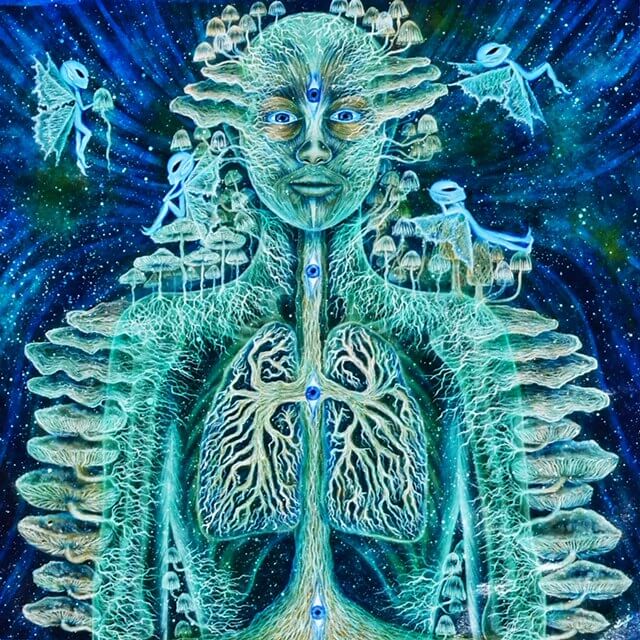
Dew of Heavan
The Bible introduces us to a substance in the atmosphere and fatness of the earth called the “Dew of Heaven.” It is connected to the Holy Spirit, the manna of Heaven, and wisdom. A symbol of material prosperity (Deuteronomy 33:13, 28; Zechariah 8:12), and its absence is represented as a sign of Divine displeasure (2 Samuel 1:21; 1 Kings 17:1; Haggai 1:10, 11) It is among the choicest parts of the earth (Genesis 45:18) and with it, we have plenty of corn and wine, which is the produce of the soil (cf. Deuteronomy 33:28).
This peculiar Dew substance is also likened to a tree with its stump within the earth and part of the land that also could be drenched upon men turning them from a man into Beasts by taking over their mind as we learn in Daniel 4:15;
“He called out in a loud voice: ‘Cut down the tree and chop off its branches; strip off its leaves and scatter its fruit. Let the beasts flee from under it, and the birds from its branches. But leave the stump with its roots in the ground, and a band of iron and bronze around it, in the tender grass of the field. Let him be drenched with the dew of heaven and graze with the beasts on the grass of the earth. Let his mind be changed from that of a man, and let him be given the mind of a beast till seven times pass him by.”
In Deuteronomy 33:13, this dew reached to heaven and also lies beneath us – “And of Joseph he said, Blessed of the LORD [be] his land, for the precious things of heaven, for the dew, and for the deep that coucheth beneath.”
These Beasts i.e men like King Daniel were to live in darkness in the shadow of death bounded by what are called chains because they rebelled against the Most High God. As it is said in Psalm 107:10; “For He satisfies the thirsty and fills the hungry with good things. Some sat in darkness and in the shadow of death, prisoners in affliction and chains, because they rebelled against the words of God and despised the counsel of the Most High.”
As I explained in my essay, The LORD of Hosts, The Most High i.e. God represents what is called the Supreme Being, the Creator, or Father of the world. While the word ‘LORD’ or Yahweh (Jehova) is a power, force, and or a person on earth having an honorary title that has influence and authority over others on earth and in hell ie the underworld. For disobeying these natural laws, people like Daniel were put under a spell or curse in which they live like Beasts and are unable to know God who is the ultimate ruler over humankind.
In Daniel 4:25, it is said;
“This is the interpretation, O king, and this is the decree that the Most High has issued against my lord the king: You will be driven away from mankind, and your dwelling will be with the beasts of the field. You will feed on grass like an ox and be drenched with the dew of heaven, and seven times shall pass you by, until you acknowledge that the Most High rules over the kingdom of mankind and gives it to whom He wishes. As for the command to leave the stump of the tree with its roots, your kingdom will be restored to you as soon as you acknowledge that Heaven rules.”
In the old Ancient Greek text translated from the Phoenician/Hebrew, the darkness can also be translated as ignorance, wickedness, misery, destruction, and death. While the chains which bound these people like Daniel is variously translated as barzel or ubarzel in the original Phoenician. Many interpreters who study the doctored script, ignorantly claim this world means iron, but this is not the true meaning.
My research shows that the word barzel is connected to the word fetters. This word is connected to the Arabic frzn and firzil, which also means fetters and the Aramaic parzel, Syriac parzel, and Akkadian parzillu.
Barzel or Parzel is also related to the modern English, parcel which means a thing or collection of things wrapped or packed up; small package; bundle or land that has been sectioned off. It can also mean a wrap (rope) which mariners use with strips of tarred canvas, before binding it with yarn as part of a traditional technique to reduce chafing.
These words, barzel or parzel can also be connected to the Demon of the Wind and Prince of the Lower Aerial Kingdoms named Pazrael or Pazula also spelled Fazuzu, and Pazuza. A demon who is said to control the west and southwest winds bringing famine and locusts.
In the Scripture, the desert and demons of the wind are some of the most formidable foes of humankind like those found in Leviticus xvi. 9 which specifically gives the name of one desert demon to Azazel, and in Isaiah 34 to Lilith and to several demons of the same class.
Hence, we must understand by “the band” the chains by which the unfortunate king would be confined is metaphorically speaking of fetters and not actual iron chains. The word fetter is also tied to the Latin word fetor and fetid – meaning stench or a strong smell of which Francis Bacon said is related to putrefaction or moldy.
Fetters are also connected to fools, and the unwise who have them up on their feet while learning is to wise men as an ornament of gold as we learn in Ecclesiasticus 21:16-21;
“As is a house that is destroyed, so is wisdom to a fool: and the knowledge of the unwise is as talk without sense. Doctrine unto fools is as fetters on the feet, and like manacles on the right hand. A fool lifteth up his voice with laughter, but a wise man doth scarce smile a little. Learning is unto a wise man as an ornament of gold, and like a bracelet upon his right arm.”
These chains i.e., fetters, were under the control of unclean spirits, and they restrained and seized demons.
For example, in Luke 8:29, we learn, “For Jesus had commanded the unclean spirit to come out of the man. Many times it had seized him, and though he was bound with chains and shackles, he had broken the chains and been driven by the Demon into solitary places.” However, some of these demons could easily break the chains and could not be subdued as it is said in Mark 5:4-5;
“This man had been living in the tombs and could no longer be restrained, even with chains. Though he was often bound with chains and shackles, he had broken the chains and shattered the shackles. Now there was no one with the strength to subdue him. Night and day in the tombs and in the mountains, he kept crying out and cutting himself with stones.”
Throughout Daniel 4-5, the beastly king was ‘drenched by dew’ three times until his sanity was restored. (Dan. 4:15, 23, 25, 33, 5:21) First in the dream, v.15, then in the interpretation in v. 25, and again in the outcome v.33 when the king was ‘driven away from people, and ate grass like cattle. His body was drenched with the Dew of heaven until . . . his sanity was restored”.
“As for the command to leave the stump of the tree with its roots, your kingdom will be restored to you as soon as you acknowledge that Heaven rules.” (Daniel 4:26)
Nebuchadnezzar represented the sons of rebellion, the fallen ones who defy God like wild beasts, even though, all the while, he was drenched with blessings from heaven. This supernatural Dew God continues to send down upon the just and unjust to drive them to repentance and thanksgiving. A type of symbiotic relationship with the Dew that can also become parasitic, issuing our punishments according to our deeds.
In contrast to the people who have rebelled against the Most High God, i.e. the Beasts (Behemoths/Behemoths/Fallen Angels/Demons) who lived chained (fetters/molds/fungi) in darkness and ignorance, in Proverbs, a wise man is compared to a fountain and tree of life, whose words and deeds refresh and encourage.
The Dew ie, oil or manna, is a symbol of the Holy Spirit associated with light, knowledge, and everlasting life throughout the Scripture. A reminder to God’s people of the death and resurrection of Christ. Dew is connected with the outpouring of the Holy Spirit or the anointing of the head, which is symbolized by the pouring of water or fire in Baptism. The rite of induction into the priesthood — in the New Covenant, baptism. Baptism is also our induction into the Body of Christ. Psalm 133 stresses the unity of God’s people as they are ingrafted into the priesthood of the Greater Aaron, and share in the “one baptism” — the Baptism of Christ.
Dew is also a symbol of a metaphysical oil or manna involved in Baptism, the resurrection of the dead who live in the Dust but are awakened in the morning to become God’s people, and the washing of regeneration and renewal of the earth.
As it is said on Issaih 26:19;
“We were with child; we writhed in pain, but we gave birth to wind. We have given no salvation to the earth nor brought any life into the world. 19Your dead will live; their bodies will rise. Awake and sing, you who dwell in the Dust! For your Dew is like the Dew of the morning, and the earth will bring forth her dead. Go, my people, enter your rooms and shut your doors behind you. Hide yourselves a little while until the wrath has passed.”
The Dew of heaven is a symbol of God’s blessings in general. Jacob received the blessings as the firstborn; Isaac promised Jacob that as the earth would produce its fatness of grain and new wine, the heavens would also create Dew (Gen. 27:27-29). Thus when Jacob is restored to God’s favor after the exile, they receive the blessings of Jacob, including the promise of Dew (Zech. 12:8) again.
The word Dew is variously translated as Tal, Dal, Del, Yal, Zal, or Zel in the Scripture. The Oxford Dictionary also lists the Old English dæl, of Germanic origin; related to Old Norse dalr, Dutch dal, and German Tal, also to dell. In ancient literature, Dadal is the name of an Akadian Fish God. It is connected to the Arabic Zal.
From Zal or Zel, we find the Demon called Azazel from Leviticus in the Scripture and The Book of Enoch. He is among the chief of the spirits by whose doctrine and influence the earth was corrupted in the book of Enoch. According to some of the Church Fathers, Azazel is connected to Satan or the Devil and many biblical interpreters translated the name as “scapegoat” in Leviticus xvi, 8, 10.
Amongst the Ancient Gnostics, there is the God Yaldabaoth, who is first mentioned in “The Cosmos, Chaos, and the Underworld” as one of the twelve angels to come “into being [to] rule over chaos and the [underworld]”. In the “Gospel of Nicodemus,” Yaldabaoth is called Satan. In the Nag Hammadi Library under The Apocryphon of John (The Secret Book of John – The Secret Revelation of John), it states that Yaldabaoth is the Chief Archon created by the Goddess Sophia in the “form of a lion-faced serpent, with its eyes were like lightning fires which flash. In Pistis-Sophia, Yaldabaoth is spoken of as residing in the “Great Chaos which is the Outer Mist”, where, with his Forty-nine Daemons, he tortures wicked souls (pg. 382).
In old magical books, he was the Chief demon presiding over the elements, elementals, or what I would call today – Chief of the fungi/mold Kingdom.
We find the name Dal in the Dál Riata, Dál Riada or Dalriada Scots, which was a Gaelic kingdom that encompassed the western seaboard of Scotland and the north-eastern corner of Ireland in the 6th and 7th centuries, it covered what is now Argyll in Scotland and part of County Antrim in Northern Ireland.
“For this is what the LORD has told me: “I will quietly look on from My dwelling place, like shimmering heat in the sunshine, like a cloud of dew in the heat of harvest.” (Isaiah 18:4)
The LORD extends Your mighty scepter from Zion: “Rule in the midst of Your enemies.” 3Your people shall be willing on Your day of battle. Arrayed in holy splendor, from the womb of the dawn to You belong the Dew of Your youth. The LORD has sworn and will not change His mind: “You are a priest forever in the order of Melchizedek.” (Psalm 110:3)

